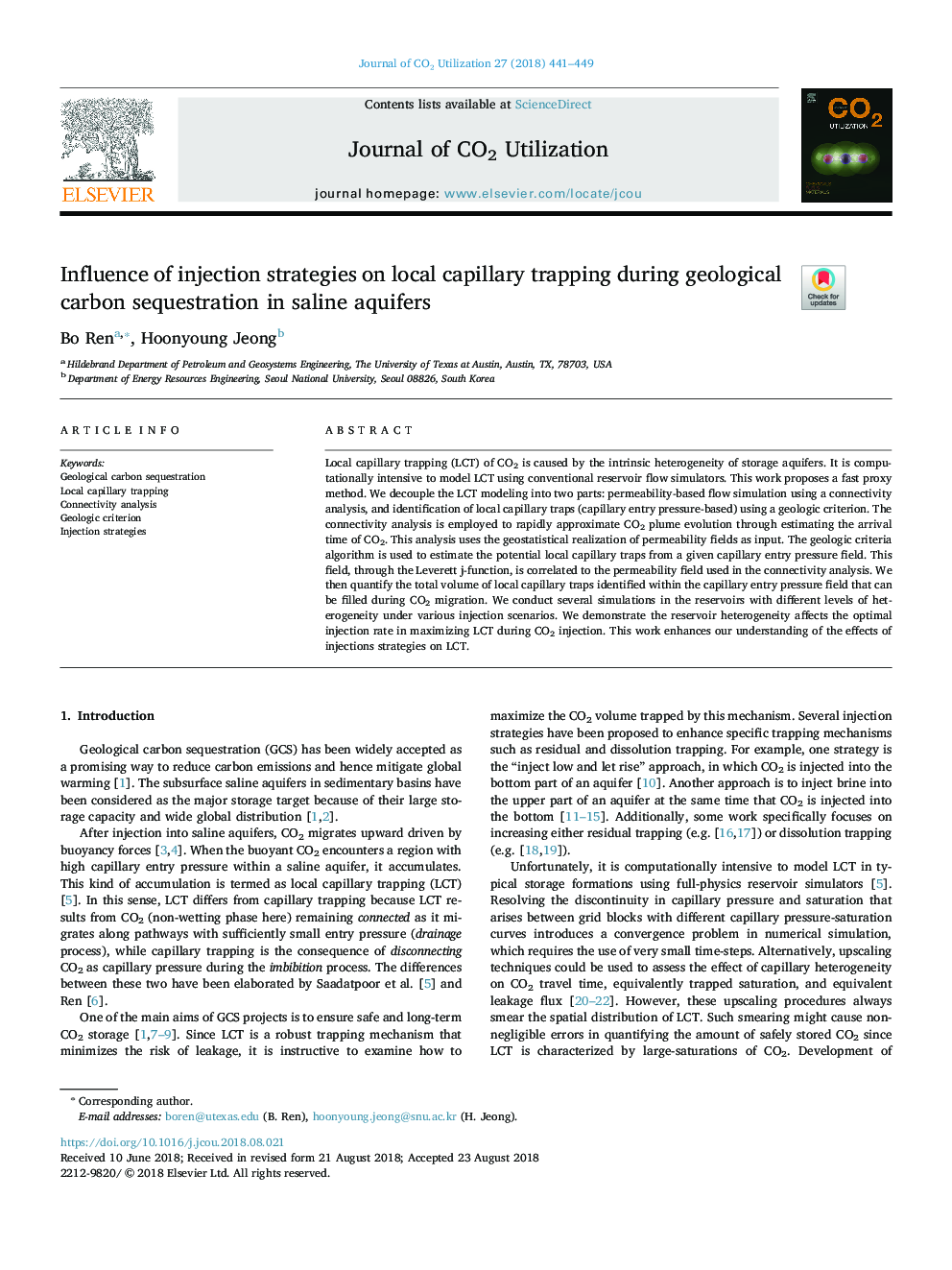| Article ID | Journal | Published Year | Pages | File Type |
|---|---|---|---|---|
| 10999955 | Journal of CO2 Utilization | 2018 | 9 Pages |
Abstract
Local capillary trapping (LCT) of CO2 is caused by the intrinsic heterogeneity of storage aquifers. It is computationally intensive to model LCT using conventional reservoir flow simulators. This work proposes a fast proxy method. We decouple the LCT modeling into two parts: permeability-based flow simulation using a connectivity analysis, and identification of local capillary traps (capillary entry pressure-based) using a geologic criterion. The connectivity analysis is employed to rapidly approximate CO2 plume evolution through estimating the arrival time of CO2. This analysis uses the geostatistical realization of permeability fields as input. The geologic criteria algorithm is used to estimate the potential local capillary traps from a given capillary entry pressure field. This field, through the Leverett j-function, is correlated to the permeability field used in the connectivity analysis. We then quantify the total volume of local capillary traps identified within the capillary entry pressure field that can be filled during CO2 migration. We conduct several simulations in the reservoirs with different levels of heterogeneity under various injection scenarios. We demonstrate the reservoir heterogeneity affects the optimal injection rate in maximizing LCT during CO2 injection. This work enhances our understanding of the effects of injections strategies on LCT.
Keywords
Related Topics
Physical Sciences and Engineering
Chemical Engineering
Catalysis
Authors
Bo Ren, Hoonyoung Jeong,
